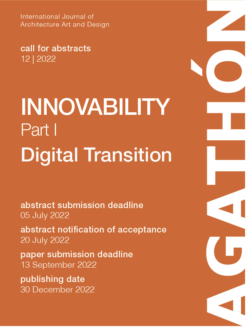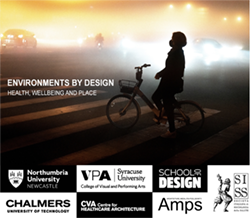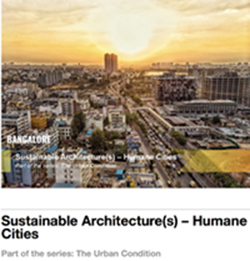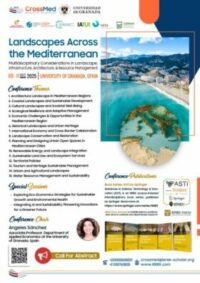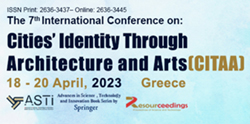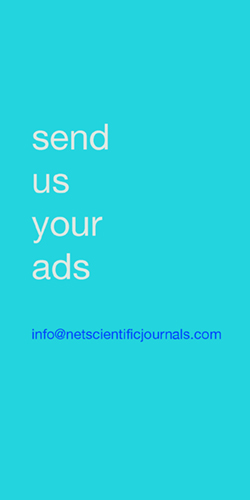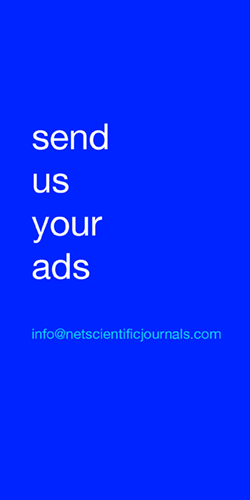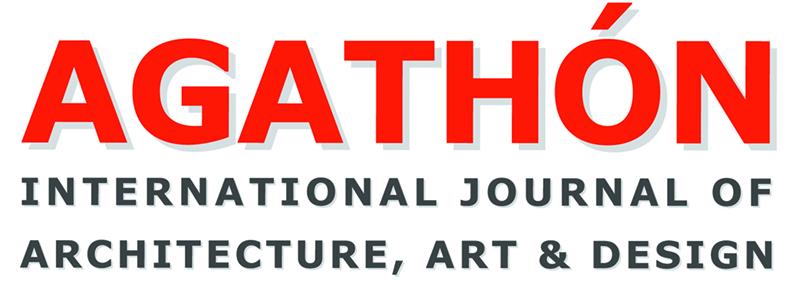ISSN (print): 2464-9309
ISSN (online): 2532-683X
Call of the Journal:
- GREENERY | Its symbiosis with the built form
- INNOVABILITY (part I) | Digital Transition
- INNOVABILITY (part II) | Ecological Transition
- INNOVABILITY (part III) | Energy Transition
- LINKS | Physical, Virtual, Digital
- MODULE | for Landscape, City, Architecture, Objects
- MODULE | for Landscape, City, Architecture, Objects
- Possible and Preferable Scenarios of a Sustainable Future | Towards 2030 and Beyond
- SDGs 1, 2, 3, 4 and 5 | Projects, research, synergies, and trade-offs
- SECOND LIFE | Regeneration, refunctionalisation, enhancement, re-cycling and up-cycling
Jul
2021
Jul
2021
Sep
2021
Oct
2021
Dec
2021
The International Scientific Committee of AGATHÓN, for its issue n. 10|2021, which will be published in December, promotes the topic LINKS | Physical, Virtual, Digital. We are facing a profound transformation, we are active witnesses of an ongoing, pervasive widespread transition which combines dichotomies (analogue and digital), enhances oxymorons (artificial intelligence), overturns axioms (ubiquity), creates paradoxes (sharing economy) involving, without distinction, architecture, humanities and social science, anthropology, sociology, ecology, biology, physical-mathematical sciences and neuroscience whose impacts will become even more evident in the medium and long term. Although they are currently visible and accelerated in part by the global health emergency. A certainly ‘digital’ transformation, which scholars such as Floridi (2020), Galimberti (2020), but also Haraway (2018), Searle (2017) and Chomsky (2011) have placed above all on an ontological and epistemological level as it involves the essence of ‘things’, the way we define them, the world around us and in particular our relationship with the elements that constitute it. Therefore, the nature of things and the relationships that connect them is one of the great issues that the digital transformation is ‘imposing’ today. It is also introducing innovative approaches and actions to solve both ‘historical’ and new problems (anticipating systems, possible futures, etc.) and new inconveniences (exclusion, digital divide, etc.), arrogating the ‘vitalism’ claimed by current cultural, social and economic challenges that influence the contents of Agenda 2030 and the principles of sustainability, innovation and social justice issues that underlie them. In fact, we are shifting from a reality made up of things to one characterised by relations – links – moving in a daily reality made up of intangible ‘objects’. Physic/material and history of forms also become virtual reality by mixing in the immaterial current of networks and deterritorialized flows: the digital ‘opens’ by connecting (delocalising) and ‘confines’, limiting (self-sufficient city), but above all it ‘induces’ new spatial configurations in a constantly evolving relationship between genius loci and shape, function and flexibility of use, between the ‘Vitruvian’ man, in his physical proportions, and the ‘inforg’ man who lives, works and relates to the contemporaneity of simultaneously virtual, physical and digital places. A space that, as an ontological entity (natural, built, joint, open, secured, connected, residual, interstitial, on a macro or micro or nano scale, no matter if we are talking about surfaces, volumes, thresholds, technical-construction/plant components and objects) in any form (from landscapes to territory, from infrastructure to cities, from buildings to objects, up to systems, components and materials) clarifies Links: Physical, in the single material, analogical and tangible object; Virtual in configuring experiences of augmented and immersive reality, of wearable technologies; Digital in interacting and implementing new creative and communicative processes and, at the same time, technical processes and to control and monitor the project at various scales, conveying forms and images, functions and performances in a new dimension of digital sharing.
In the light of these considerations, AGATHÓN, turning to disciplinary areas of the Project and in particular of Landscape, Urbanism, Architecture, Engineering, Architectural Technology, Design, Restoration Recovery, and Representation, presents the topic Links | Physical, Virtual, Digital with the aim of fuelling an open cross-disciplinary and inter-scalar confrontation, by collecting essays and critical reflections, researches and experiments, projects and actions dealing simultaneously which may include but is not limited to: objects and form; memory and transformation; addition/integration; configuration and rule; aggregation and deconstruction/disassembly; function and flexibility of use; quality and duration; smart and sensitive; languages and forms of communication; modelling and interoperability; automation and dexterity; eco-compatibility and circularity, welcoming the proposed and unspoken suggestions, in a hybridisation and contamination process of the areas of relationship that today are prefigurable and possible – between people, between people and things/places and between things/places – inside an ‘ecosystem’ that is increasingly a synthesis of these three interaction modes.
LINKS | Physical, Virtual, Digital
The International Scientific Committee of AGATHÓN, for its issue n. 10|2021, which will be published in December, promotes the topic LINKS | Physical, Virtual, Digital. We are facing a profound transformation, we are active witnesses of an ongoing, pervasive widespread transition which combines dichotomies (analogue and digital), enhances oxymorons (artificial intelligence), overturns axioms (ubiquity), creates paradoxes (sharing economy) involving, without distinction, architecture, humanities and social science, anthropology, sociology, ecology, biology, physical-mathematical sciences and neuroscience whose impacts will become even more evident in the medium and long term. Although they are currently visible and accelerated in part by the global health emergency. A certainly ‘digital’ transformation, which scholars such as Floridi (2020), Galimberti (2020), but also Haraway (2018), Searle (2017) and Chomsky (2011) have placed above all on an ontological and epistemological level as it involves the essence of ‘things’, the way we define them, the world around us and in particular our relationship with the elements that constitute it. Therefore, the nature of things and the relationships that connect them is one of the great issues that the digital transformation is ‘imposing’ today. It is also introducing innovative approaches and actions to solve both ‘historical’ and new problems (anticipating systems, possible futures, etc.) and new inconveniences (exclusion, digital divide, etc.), arrogating the ‘vitalism’ claimed by current cultural, social and economic challenges that influence the contents of Agenda 2030 and the principles of sustainability, innovation and social justice issues that underlie them. In fact, we are shifting from a reality made up of things to one characterised by relations – links – moving in a daily reality made up of intangible ‘objects’. Physic/material and history of forms also become virtual reality by mixing in the immaterial current of networks and deterritorialized flows: the digital ‘opens’ by connecting (delocalising) and ‘confines’, limiting (self-sufficient city), but above all it ‘induces’ new spatial configurations in a constantly evolving relationship between genius loci and shape, function and flexibility of use, between the ‘Vitruvian’ man, in his physical proportions, and the ‘inforg’ man who lives, works and relates to the contemporaneity of simultaneously virtual, physical and digital places. A space that, as an ontological entity (natural, built, joint, open, secured, connected, residual, interstitial, on a macro or micro or nano scale, no matter if we are talking about surfaces, volumes, thresholds, technical-construction/plant components and objects) in any form (from landscapes to territory, from infrastructure to cities, from buildings to objects, up to systems, components and materials) clarifies Links: Physical, in the single material, analogical and tangible object; Virtual in configuring experiences of augmented and immersive reality, of wearable technologies; Digital in interacting and implementing new creative and communicative processes and, at the same time, technical processes and to control and monitor the project at various scales, conveying forms and images, functions and performances in a new dimension of digital sharing.
In the light of these considerations, AGATHÓN, turning to disciplinary areas of the Project and in particular of Landscape, Urbanism, Architecture, Engineering, Architectural Technology, Design, Restoration Recovery, and Representation, presents the topic Links | Physical, Virtual, Digital with the aim of fuelling an open cross-disciplinary and inter-scalar confrontation, by collecting essays and critical reflections, researches and experiments, projects and actions dealing simultaneously which may include but is not limited to: objects and form; memory and transformation; addition/integration; configuration and rule; aggregation and deconstruction/disassembly; function and flexibility of use; quality and duration; smart and sensitive; languages and forms of communication; modelling and interoperability; automation and dexterity; eco-compatibility and circularity, welcoming the proposed and unspoken suggestions, in a hybridisation and contamination process of the areas of relationship that today are prefigurable and possible – between people, between people and things/places and between things/places – inside an ‘ecosystem’ that is increasingly a synthesis of these three interaction modes.
ANVUR, GOOGLEScholar, DOAJ, BASE, OpenAIRE, JURN, WorldCat, MIAR, ULRICHSWEB, ICI, IP Indexing, ROAD, EZB, EBSCO, ERIH PLUS, ResearchBib, OAJI. AGATHÓN is also indexed in Digital University Library in North America, South America, Europe, Asia, Australia and Africa.
The contribution for Author of a single paper is set at € 350.00. In the case of papers written by more Authors, the article publication fee will be increased by € 50.00 for each corresponding Author in addition to the first two. The fee must be paid in accordance with the directions that will be sent to the Authors at the same time as the communication of acceptance of the paper for publication. Two corresponding Authors with primary affiliations based in countries defined by the World Bank as “Lower-Middle-Income Economies” are entitled to apply for a 50% discount on the normal APC.
To encourage the publication of contributions by Authors with primary affiliation to Universities and Research Institutions in countries defined by the World Bank as ‘low-income and lower-middle-income economies’, AGATHÓN will select a maximum of two Authors to publish their contribution for free, subject to the positive outcome of the double-blind peer review process.

